Mobile networks have become essential part of human communications.
The impact of the quality of the networks on individuals, small and enterprises and the government activities is beyond measure.
The mobile network operators (MNOs) are deploying services hence the need to ensure that service rendered is in commensurate with money spent by the customers.
This is chief among reasons Enextgen Wireless’ team of engineers wake up every morning to monitor the networks, analyze and offer independent and professional advice on how to get the best quality of service for the citizens and businesses.
“We make salient portions of our reports available as public service. The MNOs and their vendors as well as any interested party have access to the reports. A more detailed version is also available for first-ass signal quality analysis by subscription”, said Engineer Remi Adeyeye, the President and Chairman of Enext Inc.
Continuing, he wrote in the latest report on KPIs published by the Nigerian Communications Commission (NCC) and the infrastructure deployment by the MNOs:
“We were curious as to how the KPIs published by the NCC could diverge from our own record and experience as much as they do. We also found it particularly interesting that the vandalism of and tampering with their infrastructure that the MNOs often complain about appear to have no impact on providing such excellent KPIs as published on NCC website. Although this could have been made possible by herculean efforts to maintain excellent KPIs by the MNOS, we don’t enjoy such excellent quality in our daily use of the networks”, Adeyeye said.
“Our primary focus since 2016 has been mobile broadband networks (4G LTE and (now) 5G NR). However, since most of the KPIs that are related to Radio Access Networks published by NCC address mostly their impact on voice connections which primarily use 2G and 3G networks in Nigeria, we decided to run verification tests for two of the key KPIs – Drop Call Rate and Call Setup Success Rate.
“We had one Call Origination phone for each of the four major national MNOs in our test vehicle making periodic calls to another phone on the same network but stationed at our Ibadan office, for the first test.
For the second test, we had all 8 phones (UE) placed in the test vehicle with the same calling pattern.
Report from the Enextgen Wireless tests:
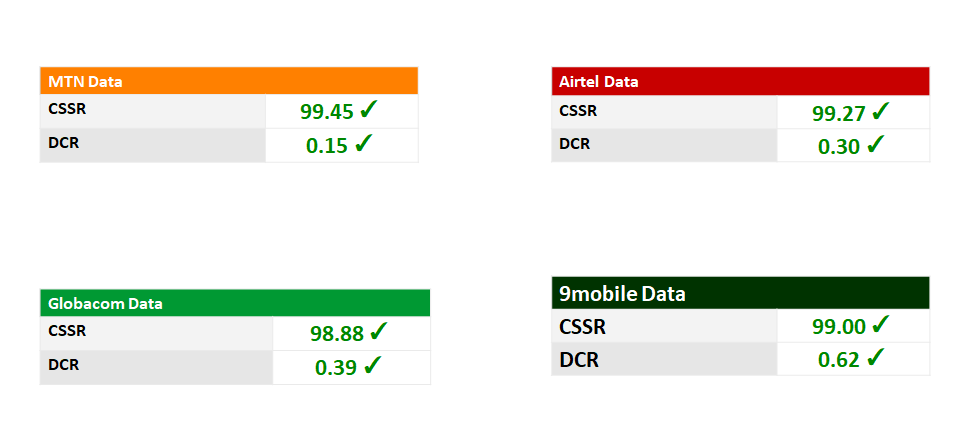
In-vehicle placement of UEs
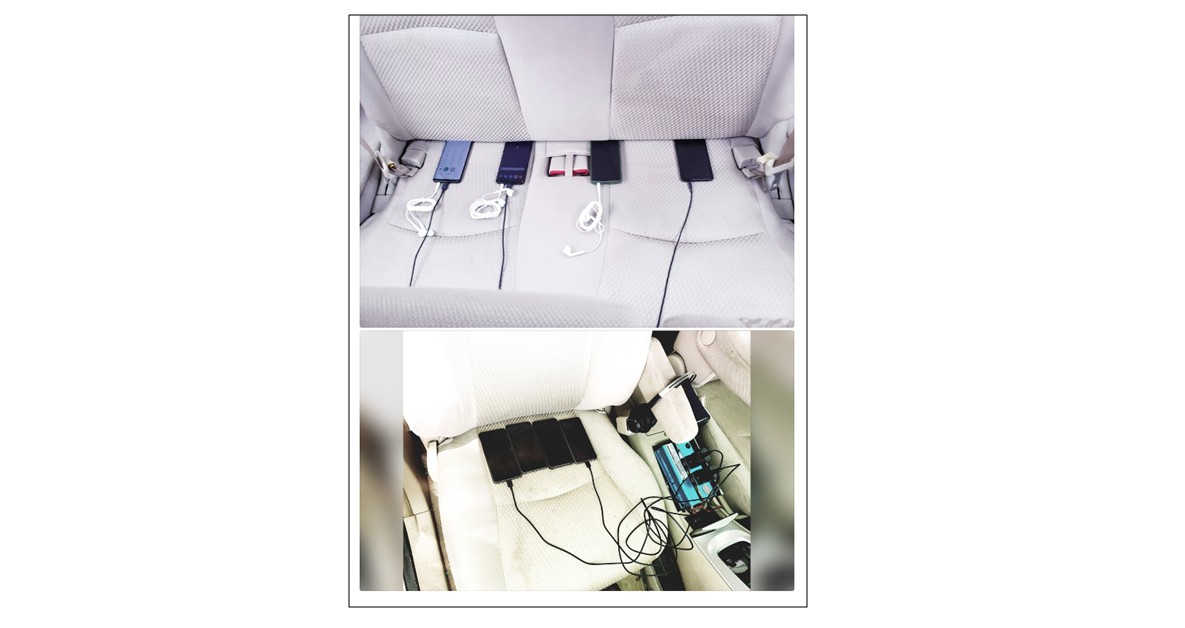
Mobile UEs to stationary UEs KPIs compared with published KPIs
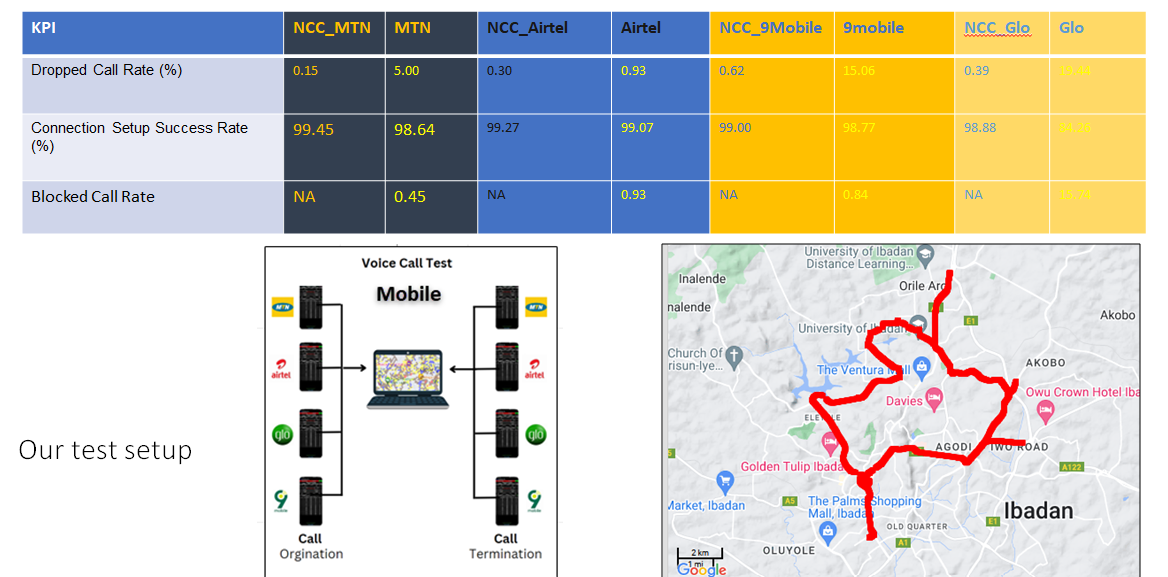
KPIs for all UEs in the same vehicle compared with published KPIs
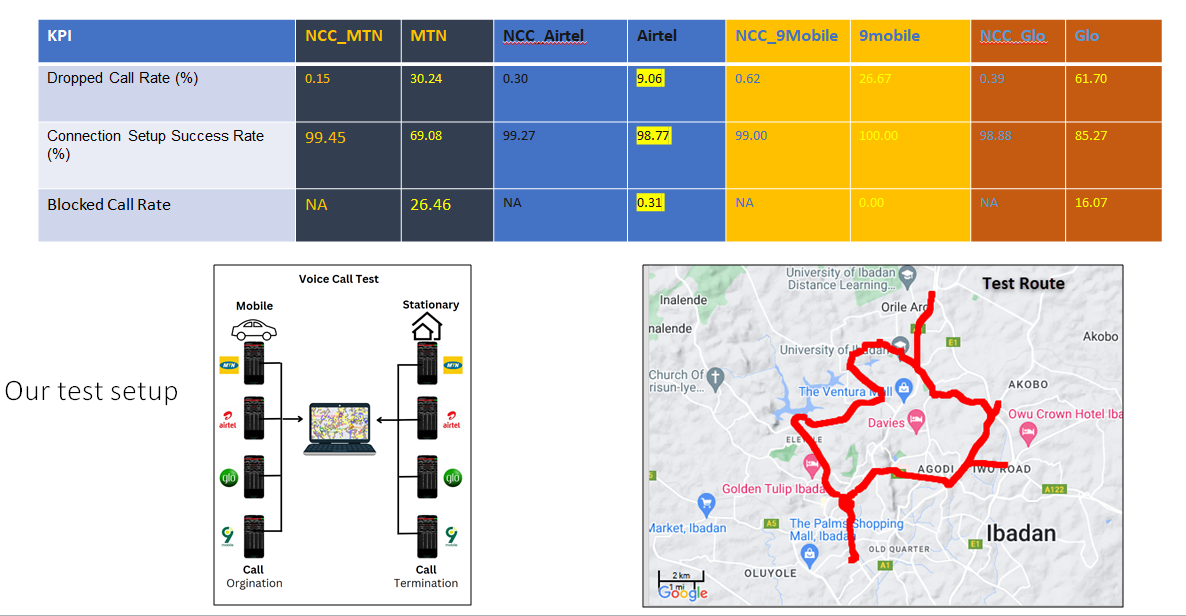
Needed changes
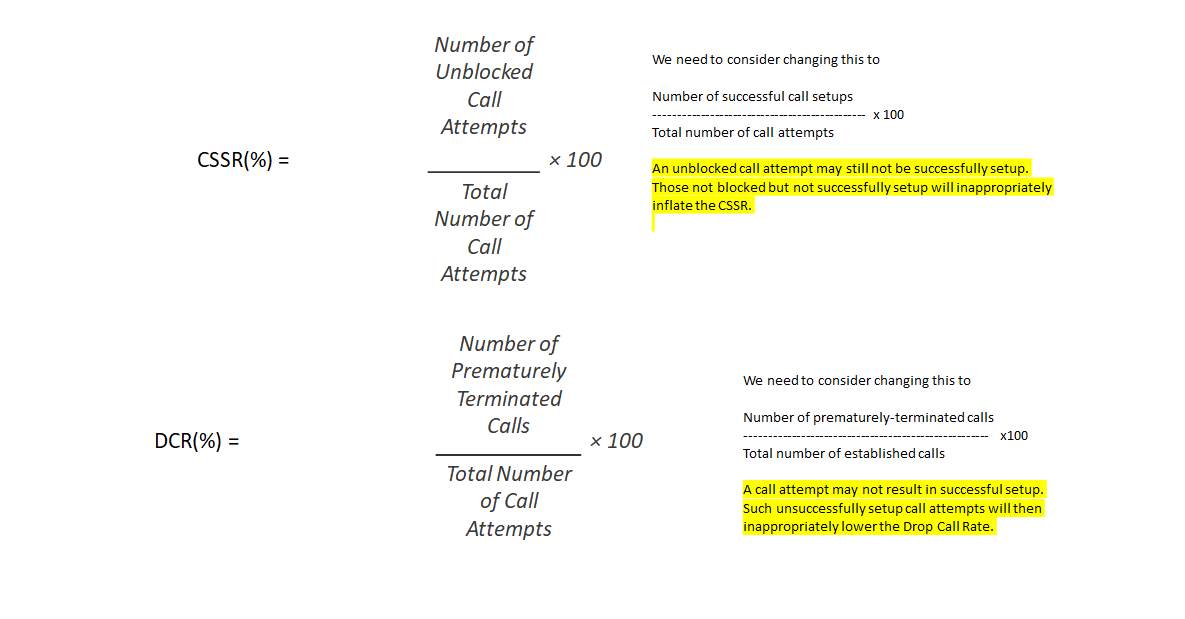
Four Key Findings in the Report
Enextgen bluntly stated that the formulas for Drop Call Rate and Connection Failure Rate used for the reports from the MNOs to NCC are suspect.
“The fact that they are could not possibly have been lost on the MNOs, given their expertise in this matter.
“A logical explanation then seems to be that the MNOs find the omissions in the formulas advantageous in that the inaccurate results they yield make their KPIs look better.
Secondly, “the KPIs that are published on NCC’s website do not support the repeated warnings about the negative impact of vandalism and willful destruction of telecom facilities on the networks. The KPIs portray networks that are almost perfect.
Thirdly, the independent report by Enextgen indicates that both MTN and Airtel claims that are very difficult to verify.
“Both claim they have deployed VoLTE nationwide. Yet most, if not all, of the calls we make on our Volte-capable phones are processed in Circuit Switched Fall Back, not VoLTE. In promoting their VoLTE deployments, the MNOs touch on the benefits of VoLTE. We find that peculiar since they do not use VoLTE to handle most of our calls.
Fourtly, “Airtel has claimed that it has equipped all of its cell sites for LTE. Yet, it is very easy to find along any stretch of many routes, cell sites where 4G UEs are served in 3G or even 2G only”.
In conclusion, the first case with mobile to stationary calls depicts a more challenging condition since the mobile phones were all inside the office where signal quality for all the MNOs need improvement. The results reflect this.
The second case with all mobile devices in the same moving vehicle depicts a very favorable condition for the MNOs. Many of the measured KPIs are not too far off from the values published.
They might have been even closer if the more appropriate formulas had been used for the published KPIs since the reported KPIs would have been worse.
“There are substantial outliers. Our hope is that the concerned MNOs will make necessary improvement”, the report contains.
Recommendations
Enegten Wireless has made available its platform – EMETRICS – to the MNOs, their MSPs and the NCC.
It is a national platform for evaluation and enhancement of the quality of mobile networks in Nigeria. The platform which costs about N11 million (eleven million nairas) per year to subscribe will allow NCC, for instance, to verify the claims made by MNOs.
It will further allow MNOs to verify the claims made by their vendors such as Nokia, Ericsson, Huawei, ZTE and others.
The emetrics allows the vendors to provide much higher network quality to the public from RF signal perspective. The very nature of our beloved country makes this necessary.
“”In other word, this is a platform that allows indigenous peoples and enterprises of Nigeria to enjoy the benefits of having the best networks possible when MNOs and their MSPs voluntarily provide visibility into the quality of their networks instead of having us take at face value their words or even those of our government”, the company said.






